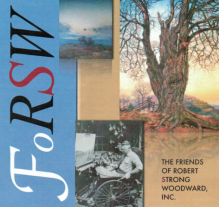Quick Reference
c. 1926
Unknown
Oil on Canvas
Landscape
Barns
30" x 42"
R.T. Lyman Residence, 1926
Springfield College, 1928
- Circulating Picture Club
J. H. Miller Galleries, 1928
Unknown
NA
Related Links
- See also the...
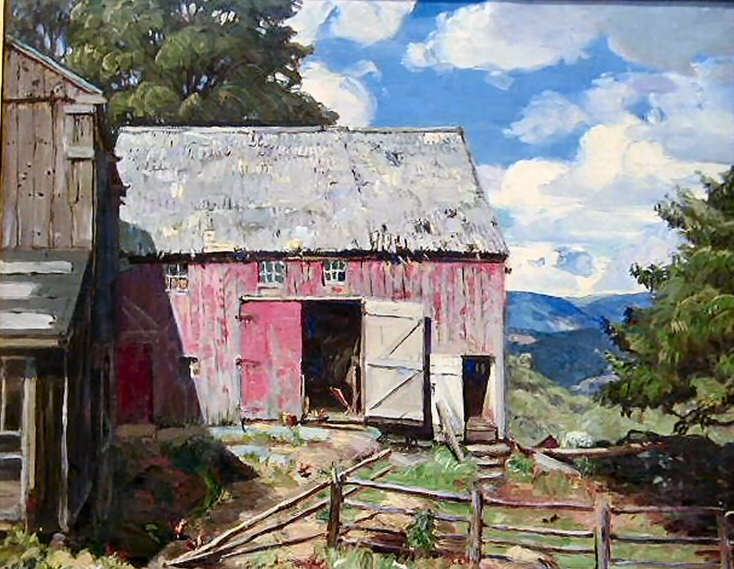 Barns Gallery to view related pieces.
Barns Gallery to view related pieces.
- See also the...
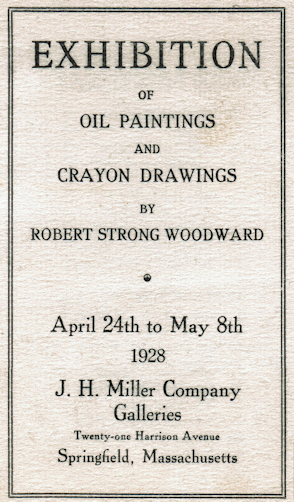 Exhibition List for a complete list of events
Exhibition List for a complete list of events
- See also the...
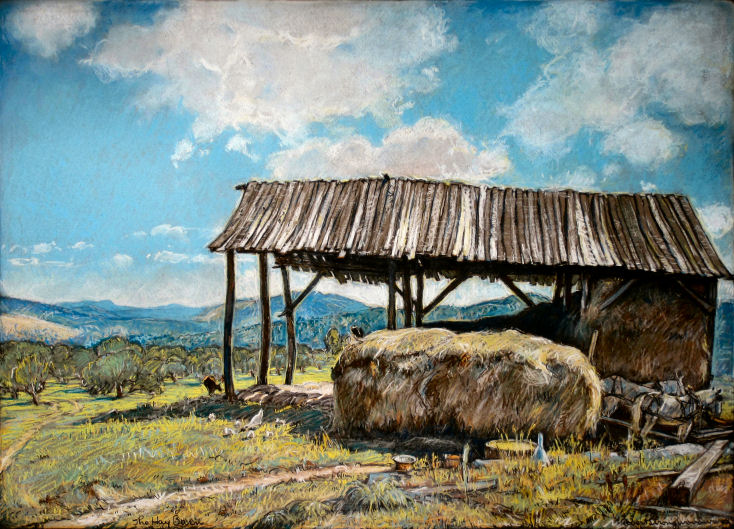 Buildings Gallery to view related pieces.
Buildings Gallery to view related pieces.
- See also the...
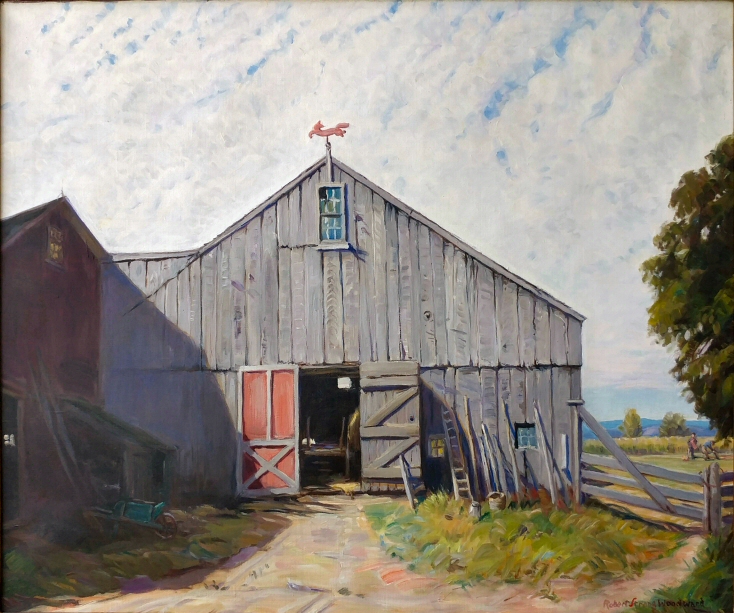 Fences, Gates & Doors Gallery to view related pieces.
Fences, Gates & Doors Gallery to view related pieces.
- See also the...
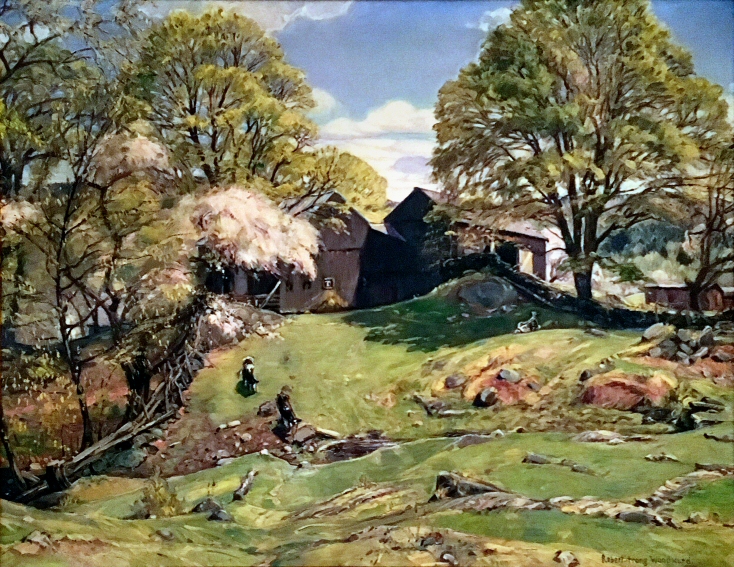 Pastures Gallery to view artwork.
Pastures Gallery to view artwork.
- See also the...
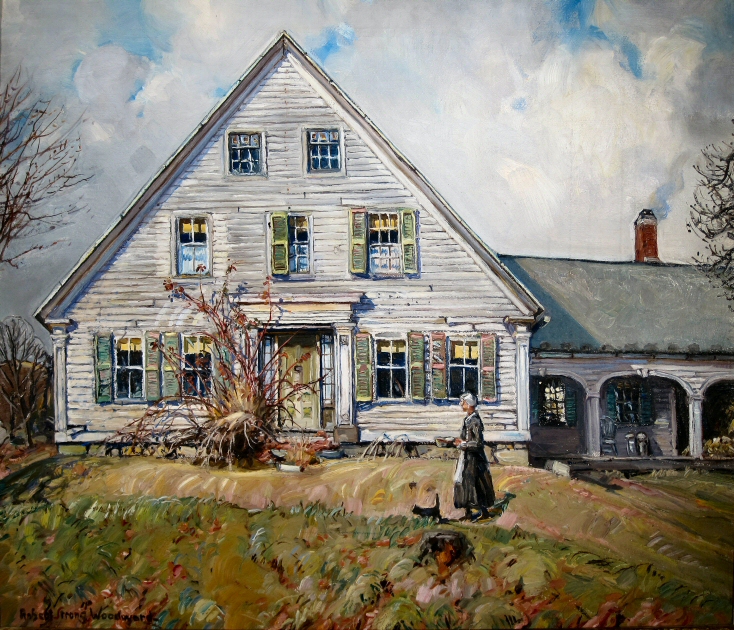 Houses Gallery to view related pieces.
Houses Gallery to view related pieces.
Featured Artwork: The Trumpeting Angel
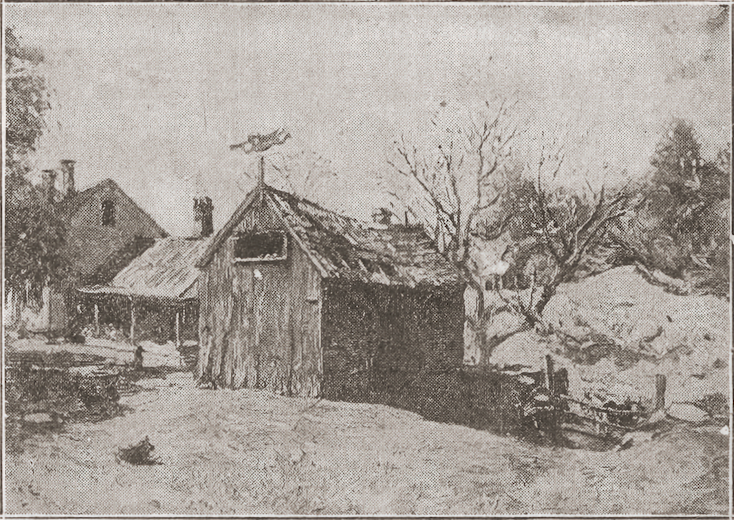
The only image we have of this piece is taken from a newspaper clipping from the Boston Post, Dec. 8, 1926
Click here for a high resolution image of this clipping
RSW's Diary Comments
TrumpetingPicHLN.png?url=photos/Newspapers/1926-12_08-BostonPost(LymanEx)TrumpetingPicLG.png)
 The Boston Post, December 8, 1926
The Boston Post, December 8, 1926
None.
Editor's Note:
The Trumpeting Angel is one of Robert Strong Woodward's most elusive and storied
canvases. If there were a list of paintings we most wish would resurface, this would rank near the
top-alongside two others known only through newspaper descriptions. Fortunately, we at least possess
a century-old clipping that reproduces the image, preserving a glimpse of its mystery.
The painting's choice as the featured artwork in the Boston Post on December 8, 1926, invites
speculation. The article announced Woodward's return to the art world following the devastating 1922
studio fire that nearly ended his career. The exhibition itself was likely organized by his steadfast
supporter, Boston socialite Mary "Minny" Eliot, a neighbor of the host, Mr. Lyman. The first sale
from the show went to the prominent collector John Spaulding-another neighbor in that same close-knit
social circle. The purchased work, The Window; A Still Life and Winter
Scene (Woodward's first "window picture"), would become the defining motif of his later
career. Taken together, the timing, the connections, and the choice of imagery feel carefully
orchestrated-almost staged-as if heralding not just an exhibition, but a rebirth.

 A Gabriel Weathervane found at the Shelburne
A Gabriel Weathervane found at the Shelburne
Museum, Shelburne, VT. There are several varieties of
this style and several different metals and woods. The
one on the canvas is likely wood. Its years 1875-1920.
The horn is also special in a mathematical way. It has
its own Wikipedia page! Here is a link: Gabriel's Horn
The central image of The Trumpeting Angel is a weathervane depicting
an angel blowing a horn. Our research suggests the figure is likely the Archangel Gabriel, traditionally
shown with a trumpet in Christian art. A similar example, dating between 1875 and 1920, resides at the
Shelburne Museum in Vermont-a striking parallel both in period and form.
In Christian tradition, Gabriel's trumpet announces Judgment Day-the moment of reckoning and renewal.
For Woodward, this symbolism must have resonated deeply. After the fire that destroyed his studio and
early career, this exhibition truly marked a second coming: a resurrection from the ashes, both literal
and artistic. The Trumpeting Angel thus serves as an emblem of triumph and transcendence-his own
announcement to the world that he had returned.
Sixteen months later, this painting, along with two others first shown at the Lyman exhibition, would reappear in Woodward's first formal gallery show at the J.H. Miller Gallery in Springfield, Massachusetts-further cementing its role in the artist's remarkable resurgence. Accompanying the Trumpeting Angel is a new pastel and angel—The Patient Angel, another symbolic reference, perhaps a commentary on Woodward's slow ascent professionally. A reminder to trust and have faith. More Below ⮟
Additional Notes
Springfield Union, April 25, 1928, by Jeanette Matthews
"Most of the three dozen are new and shown here for the first time. 'The Trumpeting Angel' is one that was shown in Boston few months ago and has since been lent through the Circulating Picture Club to Springfield College..."

 The Springfield Daily Republican,
The Springfield Daily Republican,
Apr. 28, 1928

 The Springfield Daily Republican, Apr. 25, 1928
The Springfield Daily Republican, Apr. 25, 1928
⮜ ⮝ Here are two articles related to the 1928 J.H. Miller Gallery exhibition. It is a bit confusing because the Springfield Republican newspaper was going through a lot of changes in the 1920s. We have clippings were it is referred to as the 'Daily Republican' or the 'Union Republican' and there are also clippings listed as the 'Republican Tribune,' and perhaps at some time it was called the 'Herald Republican,' though we can't think of an example off the top of our head. As accurate as we try to be with these things, we do not always have the "folio" (the top part of the newspaper page with the name of the paper, the date, and day of the week) as part of the clipping in RSW's scrapbook.

On the clipping itself (above right), you will see the handwritten note by Woodward himself,
stating, "a good article." Jeanette Matthews was, at the time, a highly regarded local art critic and
reviewed numerous exhibitions where Woodward was represented.
The next month after the show,
Matthews would interview Woodward and write an impressive feature. In it learn a number of things, like
for instance, that Woodward, at the time, was suffering from neuropathy in his hands which made it difficult
to handle a paintbrush the way he needed to, so he invested more time into making pastels. From 1927 to
1929, he made four pastels to every oil.
Springfield Sunday Union Republican, May 18, 1928 ⮞
To the right: This is a featured profile on RSW written by Jeanette Matthews a couple weeks
later. This is where we learn of Woodward's neuropathy problems among other things.
Note that the
newspaper's new is different from the ones above! It is now the "Union Republican." Also, this article is
6 pages long in a PDF document. If you prefer reading it that way, here is a link: Buckland Man Paints With Brush of Poet

.png)
